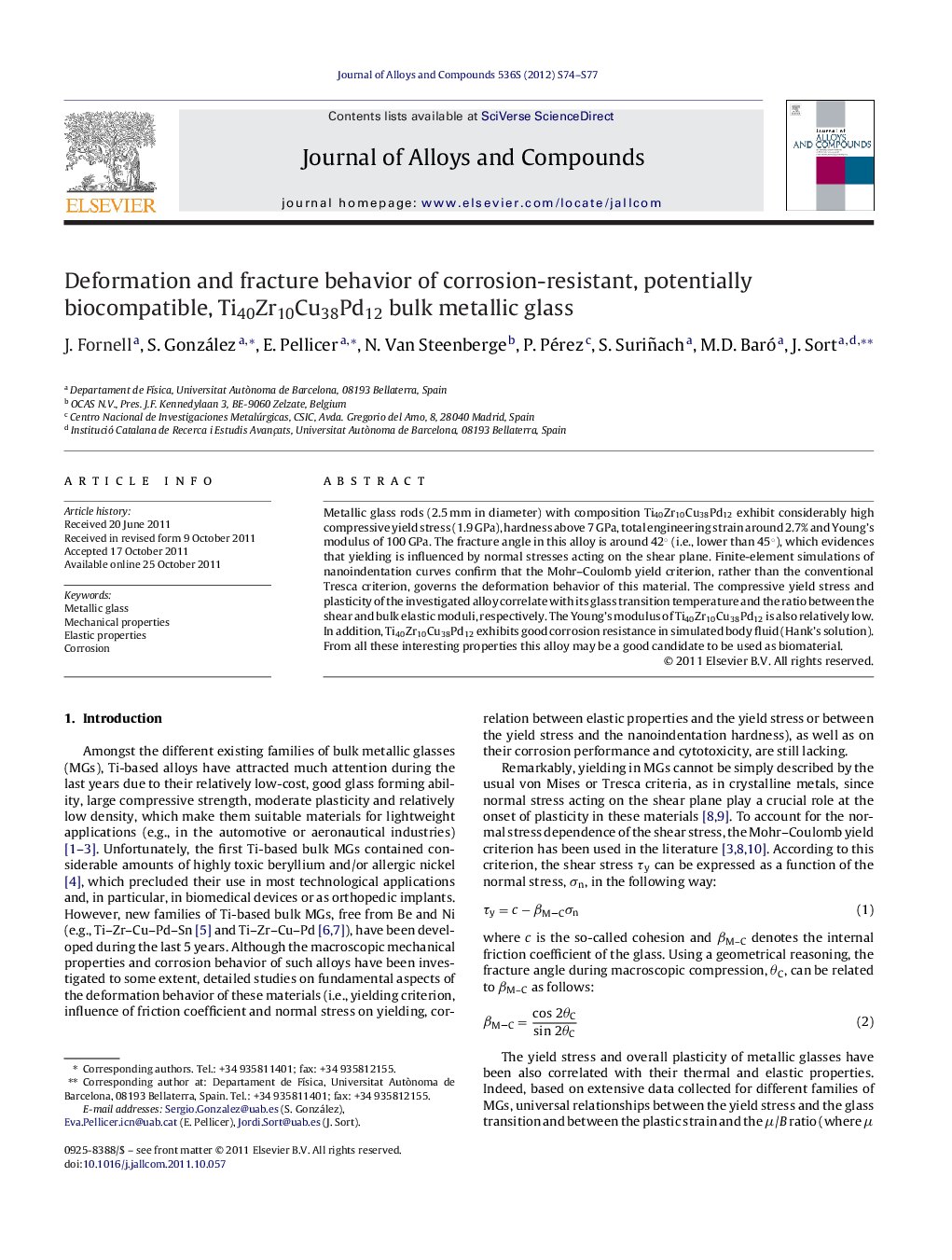| Article ID | Journal | Published Year | Pages | File Type |
|---|---|---|---|---|
| 1615882 | Journal of Alloys and Compounds | 2012 | 4 Pages |
Metallic glass rods (2.5 mm in diameter) with composition Ti40Zr10Cu38Pd12 exhibit considerably high compressive yield stress (1.9 GPa), hardness above 7 GPa, total engineering strain around 2.7% and Young's modulus of 100 GPa. The fracture angle in this alloy is around 42° (i.e., lower than 45°), which evidences that yielding is influenced by normal stresses acting on the shear plane. Finite-element simulations of nanoindentation curves confirm that the Mohr–Coulomb yield criterion, rather than the conventional Tresca criterion, governs the deformation behavior of this material. The compressive yield stress and plasticity of the investigated alloy correlate with its glass transition temperature and the ratio between the shear and bulk elastic moduli, respectively. The Young's modulus of Ti40Zr10Cu38Pd12 is also relatively low. In addition, Ti40Zr10Cu38Pd12 exhibits good corrosion resistance in simulated body fluid (Hank's solution). From all these interesting properties this alloy may be a good candidate to be used as biomaterial.
► The mechanical behavior of Ti60Zr10Cu38Pd12 metallic glass is investigated by comparing results from compression tests and nanoindentation. ► Deformation in this alloy is governed by the Mohr–Coulomb yield criterion. ► This alloy exhibits considerably high compressive yield stress (1.9 GPa), hardness above 7 GPa, total engineering strain around 2.7% and Young's modulus of 100 GPa. ► This alloy exhibits good corrosion resistance in simulated body fluid.
